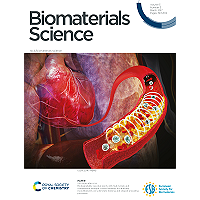Silver materials have been widely used as antimicrobial agents. Notably, silver nanoparticles have emerged as a new generation of nanoproducts for biomedical and environmental applications in recent years. However, ultrasmall silver nanoclusters (NCs) (similar to 2 nm) have rarely been used to kill bacteria and their antibacterial mechanisms have not yet been fully elucidated. Herein, we studied the antibacterial activities of bifunctional fluorescent DHLA-AgNCs against three types of bacteria. The results showed that DHLA-AgNCs exhibited excellent antibacterial activities against Gram-negative E. coli, which could efficiently inhibit the growth of E. coli DH 5 alpha and E. coli DSM 4230 cells at a concentration of 15 and 10 mu g mL(-1), respectively. Meanwhile AgNCs demonstrated no apparent antibacterial activity against Gram-positive S. aureus. Then, the antibacterial mechanisms of AgNCs were systematically investigated. We found that AgNCs affected the growth of different E. coli strains in different ways. AgNCs inhibited the growth of E. coli DH 5 alpha mainly through damaging the outer cellular membrane and permeating into the cells, followed by the antibacterial effect of the internalized AgNCs and released silver ions. AgNCs, however, inhibited the growth of E. coli DSM 4230 cells mainly through diffusing into E. coli DSM 4230 cells and damaging their respiratory chain. These results clearly indicated that different bacterial strains (e.g. different E. coli strains) should be taken into consideration in future studies. Our work facilitates further investigation of the design of new antibacterial silver nanomaterials with different sizes.

Ultrasmall silver nanoclusters: Highly efficient antibacterial activity and their mechanisms
Review badges
0 pre-pub reviews
0 post-pub reviews

